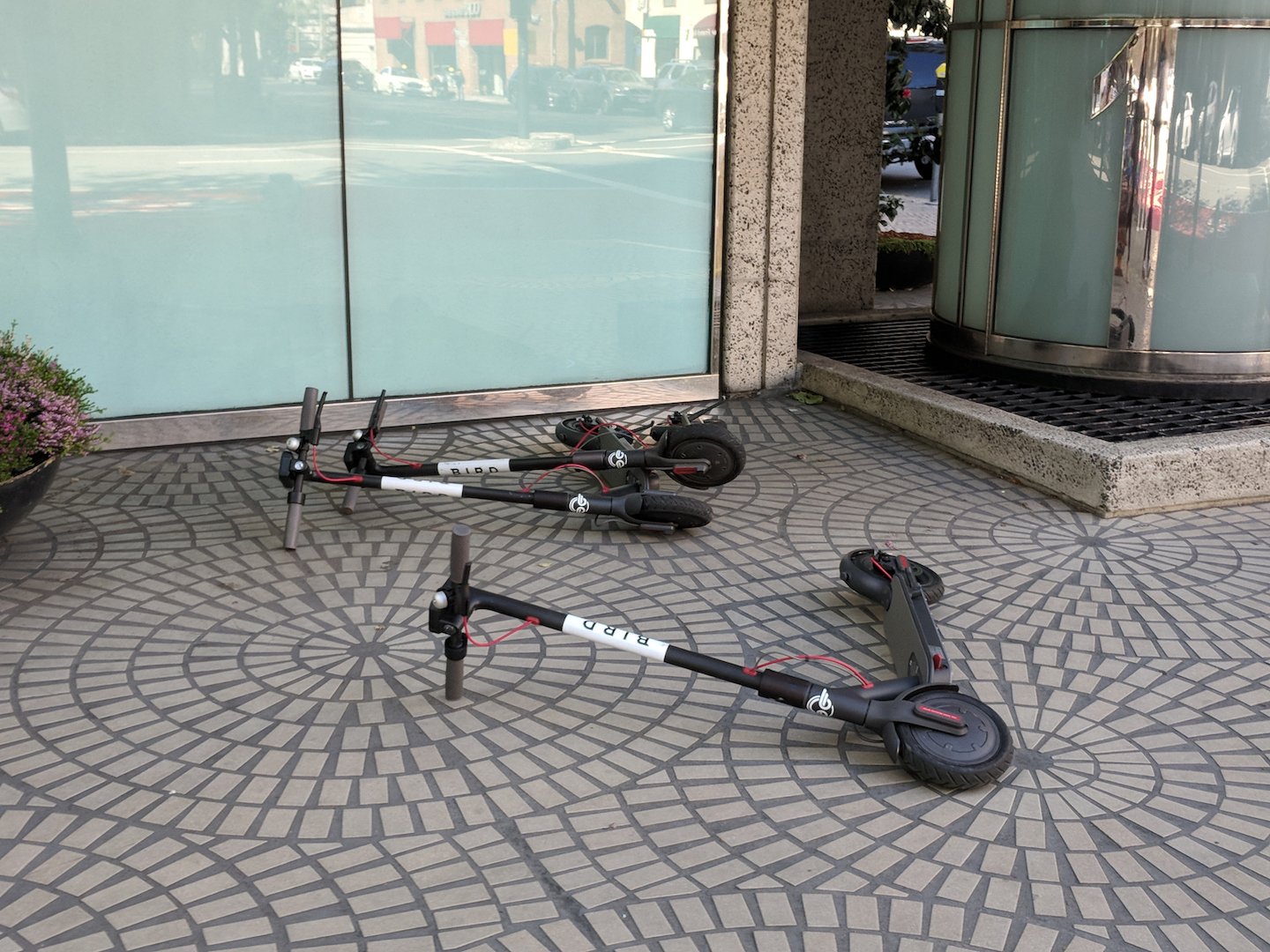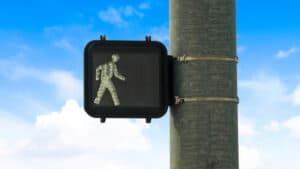
Tricia P. from South of Market asks: “I came out of my apartment front door and tripped over a Bird scooter and fell face first. I was able to catch myself on a nearby tree and wasn’t seriously injured but I could have broken my arm. Just a few days earlier someone was riding one of the green scooters and almost clipped me as I exited Starbucks. What gives? Who would be responsible if I had been smashed into or if I fell and broke my wrist?”
Tricia, there has been a sudden proliferation of motorized scooters, available to rent by the hour via apps such as Bird, Spin, and LimeBike. These businesses’ approach to regulation recalls that used by Uber and Lyft several years ago: they just dropped in on San Francisco without checking on relevant laws, working with local authorities, or generally thinking of the consequences of their actions.
Your negative encounters with rented scooters, unfortunately, are hardly isolated. My firm has been contacted by several people who have tripped over carelessly-placed vehicles and one who was struck by a scooter driver on the sidewalk. While the technology is new, basic legal principles set up a framework for resolution of injury claims while the state and local legislatures race to catch up with the challenges these scooters present.
The simple answer to your question is both Bird and the scooter renter may be held liable for injuries caused by the scooter’s use and/or misuse under traditional principles of product liability and negligence. Bird provides no return location and encourages users to leave scooters wherever they want; it is therefore foreseeable that a customer may dispense of the scooter without due care given to hazards posed to others.
Further, Bird can track its scooter locations through GPS, so they possess information that could enable them to identify and ameliorate possible obstructions to traffic and pedestrians. Additionally, if the last rider leaves a scooter blocking the sidewalk, for example, they could also be held liable for negligently creating a tripping hazard. Like all drivers, scooter users bear the responsibility to act reasonably and in compliance with applicable law, including the Vehicle Code.
Although there is a race to create additional laws to address the specific issues and risks posed by rented motorized scooters, existing state law already provides some guidance and regulation. Enacted in 2015, California Vehicle Code (CVC) Section 313.5 reads as follows: “An ‘Electrically Motorized Board’ is any wheeled device that has a floorboard designed to be stood upon when riding that is not greater than 60 inches deep and 18 inches wide, is designed to transport only one person, and has an electric propulsion system averaging less than 1,000 watts, the maximum speed of which, when powered solely by a propulsion system on a paved level surface, is no more than 20 miles per hour. The device may be designed to also be powered by human propulsion.”
Section 313.5 was intended to cover “hoverboards,” although a strong argument can be made that electric scooters rented by Bird, Spin, and LimeBike also meet the definition of an EMB under Section 313.5. Therefore, although the definition has not yet been tested in court, any case law involving EMBs, including lawsuits for negligence, would likely guide cases involving scooters.
Although not necessarily implicated by the facts you describe, several California Vehicle Code regulations governing EMBs may also interest you:
Section 21291 states that EMBs may only be operated by someone 16 years or older and Section 21292 prohibits operation of EMBs on roadways, bikeways, sidewalks, bicycle paths, etc. without a helmet.
Section 21293 states that EMBs operating on public streets, paths or trails at night must be equipped with proper white headlamps visible from a distance of 300 feet, red back reflectors visible from 500 feet, and white or yellow side reflectors visible from 200 feet.
Section 21294 limits EMB operation on roadways to roads with speed limits of 35 miles or less, except within designated bikeways, and restrict EMB speed along highways or on bikeways, sidewalks or trails to a speed not exceeding 15 miles per hour. Notwithstanding the previous speed restrictions, EMBs may not be operated at any speed greater than is reasonable or prudent having due regard for weather, visibility, pedestrian and vehicular traffic, and the surface and width of the highway, bikeway, sidewalk or trail, nor at any speed that endangers the safety of any person or property.
CVC 21296 states that it is unlawful to operate an EMB while under the influence of alcoholic beverages and/or drugs.
Stay tuned for next week, when I will discuss newly introduced and passed legislation aimed directly at addressing the hazards and nuisances created by scooter rental apps like Bird, Spin, and LimeBike.










